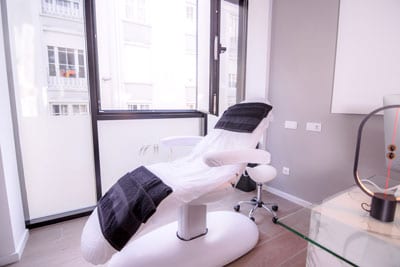The healthcare industry and furniture designers are constantly innovating to produce a safer, more comfortable experience for patients. From functionality to aesthetics, healthcare furniture has a surprisingly large impact on nearly every aspect of any healthcare facility.
If you work in a hospital, clinic, doctor’s office, or any other healthcare setting, you’re likely always on the lookout for ways to improve the quality and efficiency of care. It’s in everyone’s best interests for patients to be comfortable. Adding high-performing healthcare furniture is often one of the easiest ways to make the kind of impact you’re looking for.
Here are 7 ways healthcare furniture is changing to improve the experience of patients, families, and staff alike.
Bariatric Healthcare Furniture
Nearly 40% of U.S. adults are obese. Unfortunately, traditional furniture is not designed with larger adults in mind. This not only causes discomfort but also poses safety and health risks for larger patients.
Chairs with thoughtlessly designed arms could cause someone to develop skin ulcers from too much furniture pressure on already fragile skin. Healthcare furniture that can’t support higher weights could break underneath a patient. These problems are particularly important to address in healthcare settings since overweight patients often have an increased need for healthcare services.
To accommodate everyone, make sure your healthcare facility has at least some furniture in every area that accommodates weight up to 750 pounds or more.
Comfortable Healthcare Furniture Without Sacrificing Style
 While it is important to provide a range of furniture that accommodates people of all needs, it is also important to select furniture that is visually appealing.
While it is important to provide a range of furniture that accommodates people of all needs, it is also important to select furniture that is visually appealing.
Drab, monotone furniture can add to stress or anxiety, making it harder to put patients at ease. Furniture that is both comfortable and visually appealing can do wonders in creating a relaxing experience for patients while contributing to the image of your practice.
Sustainable Design: Good for Patients and the Planet
Sustainability is no longer just a “nice to have” element in healthcare furniture design. Designers are realizing that environmentally friendly furniture and a focus on nature are better for patients as well as the earth.
Non-sustainable materials often release more harmful chemicals into the air, including Volatile Organic Compounds (VOCs). VOCs cause negative health effects ranging from eye irritation to damage to the central nervous system. While a healthy person may not notice the difference, patients often have a weakened immune system and may be more sensitive to air quality issues.
Designing Healthcare Furniture for Flexibility
With multiple activities often taking place in the same exam room, it’s important for healthcare furniture to be adaptable. Hospitals and clinics often benefit from reconfigurable furniture that can moved around to accommodate large equipment, mobile carts, or adjustable workstations.
Modular furniture can also be helpful outside the exam room. Families may prefer to rearrange furniture to sit together in the waiting room, for instance.
Cleanability: A Healthcare Must
Infection control is a major concern in healthcare settings. Patients are far more likely to have an infectious disease than people outside the healthcare facility. The last thing an ill or injured patient needs is to be infected by another patient while trying to recover at the hospital, but that can easily happen when furniture isn’t cleaned to an exceedingly high standard.
Cleanliness doesn’t only depend on cleaning processes, though. Bacteria and viruses can easily grow in the cracks and crevices of regular furniture even if staff are diligent about sanitation. It’s vital that healthcare furniture meets a higher cleanability standard.
Cushions and arm pads should be easy to remove and clean under. Materials should be nonporous and durable. Vinyl that is specifically designed for healthcare and polyurethane textiles are durable, moisture-proof, and easy-to-clean options.
Ergonomic Healthcare Furniture for All Patients and Healthcare Staff
 No two patients are alike, and furniture needs to be designed to accommodate bodies of all sizes and dexterities. Adjustable chairs and other healthcare furniture designed for easy movement can make a huge difference.
No two patients are alike, and furniture needs to be designed to accommodate bodies of all sizes and dexterities. Adjustable chairs and other healthcare furniture designed for easy movement can make a huge difference.
Hospital staff also need to protect their own health. Nurses are constantly bending throughout the day, and staff members can strain their backs while transferring patients in and out of poorly designed healthcare furniture. Smooth recliners, optimized seat heights, and other solutions can protect hospital staff so they can continue to provide great care to patients.
An Uplifting Healthcare Environment
Hospitals aren’t exactly known for being happy places to visit. While some of this is inevitable due to the context of why people visit, a lot of it comes from colorless, unpleasant interiors that were designed with little attention to emotional impact.
Fortunately, there are ways to create a significantly more positive experience. Many hospitals are focusing on art and interior design to create warm, inviting spaces. Even something as simple as a change in lighting can help people feel more comfortable.
Don’t underestimate the importance of aesthetics in a healthcare setting. A relaxing, uplifting environment can help many patients recover faster. Choose aesthetically pleasing healthcare furniture and colorful, beautiful décor to help your patients heal.
Everett Office Furniture provides attractive, highly functional healthcare furniture for every part of your facility. From the waiting area to treatment rooms, we provide high-quality modern furniture for clients throughout Everett, Snohomish County, and the surrounding area. View our products page and get a free customized quote.